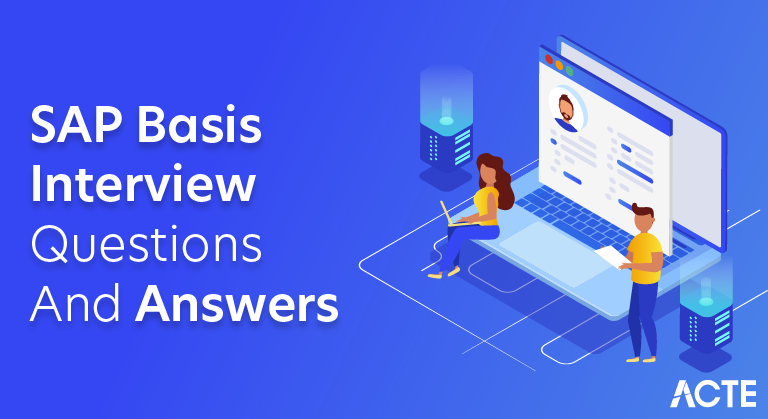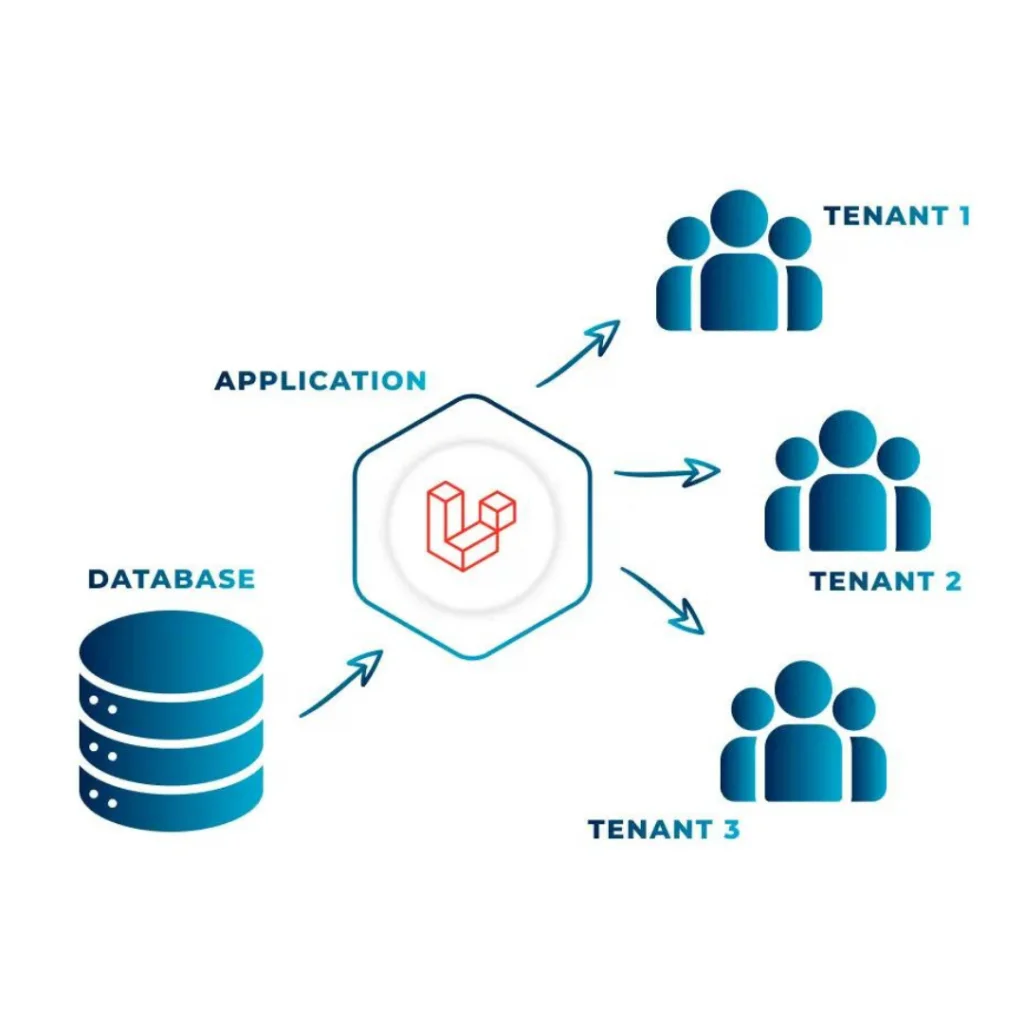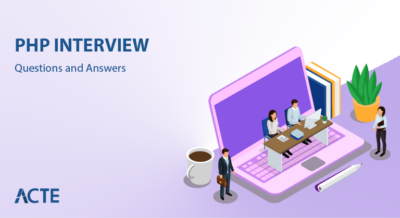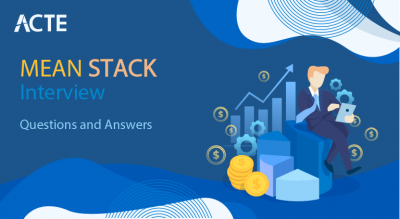
Laravel is a powerful PHP web application framework known for its elegant syntax, developer-friendly features, and robust ecosystem. Developed by Taylor Otwell, Laravel simplifies common tasks such as authentication, routing, caching, and sessions, making web development faster and more efficient. It follows the MVC (Model-View-Controller) architectural pattern, providing a structured way to organize code and separate concerns.
1. Which Laravel version is the most recent?
Ans:
Version 11 is the most recent stable release of Laravel. It became accessible to the general public on March 12, 2024. This edition includes many new features and improvements. For bug patches, Laravel 11 will be supported through September 3rd, 2025, and for security fixes, until March 12th, 2026. Additionally, it enhances performance and developer experience, making it a significant upgrade.
2. What is Composer?
Ans:
- Using the well-known Laravel web application framework, you can create dynamic websites and applications.
- Installing third-party libraries is simple when you use ComposerComposer.
- Dependencies are managed by Composer. They are placed in the source folder and specified in the composer.json file.
3. Which templating engine does Laravel employ?
Ans:
- The Laravel Blade templating engine is a strong component of the framework.
- It enables you to develop complex templates quickly using an easy-to-understand syntax.
- Structure is provided via the Blade templating engine, which includes loops and conditional statements.
- All you have to do to make a blade template is to create a view file and save it with the extension.blade.PHP rather than.php.
4. Which databases is Laravel compatible with?
Ans:
Laravel takes care of you. The app/config/database.php file is the database configuration file. You are able to specify your database connections and indicate which one you should use as a reference. This file contains examples for each supported database system. The four database systems supported by Laravel are MySQL, Postgres, SQLite, and SQL Server.

5. What is an artisan?
Ans:
The artisan script is a command-line interface that comes with Laravel. When you run PHP artisan serve or composer create-project, it will be the first thing you see. One of your greatest tools for creating and maintaining Laravel apps is Artisan, which is nothing more than a collection of commands. PHP artisan list can be used to get a list of all available Artisan commands.
6. How can I define environment variables in Laravel?
Ans:
- If you use Linux, you are undoubtedly already aware of environment variables. You can look up the environment offered Using the printenv command on variables.
- Use the export command and your new variable name (export name=Simplilearn) to define an environment variable in Linux.
- Your current environment’s env variables are stored in the.env file. The DotEnv Library powers it.
7. What makes Laravel suitable for both frontend and backend full-stack development?
Ans:
Laravel is an excellent option for creating full-stack web applications, enabling scalable backend development. The default Vue.js can be used to build SPAs or Blade files for the frontend. Additionally, it allows for the creation of APIs to support SPA functionality. Its versatility makes it a powerful choice for developers looking to integrate both frontend and backend solutions seamlessly.
8. what is the different between string and integer?
Ans:
| Aspect | String | Integer |
|---|---|---|
| Definition | A sequence of characters enclosed in quotes. | SA whole number without a decimal point. |
| Representation | Enclosed within single (”) or double (“”) quotes. | Represented by digits without quotes. |
| Operations | Can be concatenated using the ‘.’ operator. | Arithmetic operations like addition and subtraction are possible. |
| Type Conversion | Can be implicitly converted to integers in certain contexts (e.g., numerical operations). | Can be explicitly cast to a string using functions like `strval()`. |
9. Which Laravel route files are pre-installed?
Ans:
- For additional kinds of routes, you can make a separate file or declare Laravel routes in your routes/web.php file.
- The Laravel framework automatically loads these files. Your web interface’s routes are defined in the routes/web.php file.
- The web middleware group is in charge of these routes, which include capabilities like CSRF protection and session state. Stateless routes are defined in the API middleware group and can be found in routes/api.php.
10. What are migrations in Laravel?
Ans:
Laravel has a feature called migration that lets you change and distribute the database schema for the application. It will make it possible You can make changes to the table by removing or adding columns. Database migrations provide an elegant solution to the dilemma of having to instruct a colleague on how to add a column to their local database schema manually. Your team can share and edit the application’s database schema with others using migrations, which function similarly to version control for databases.
11. What are seeders in Laravel?
Ans:
- Thanks to the database seeding feature, you can quickly add data to your database with Laravel.
- This is beneficial in development settings where you might not have access to the production database.
- You may seed your database with data using Laravel. A Database Seeder class is defined for you by default.
12. Where in Laravel are the factories located?
Ans:
Model factory is a great feature in Laravel that lets you create fictitious data for your models. It helps to observe your code in operation before any accurate data is entered into your database for testing and seeding bogus data. User information is received. The database seeding feature in Laravel will, by default, add a new row to the database table and fill in each field with the value. However, occasionally, you prefer a few additional spaces or a random word in place of a number. That is the use of model factories!
13. How can I use Laravel to implement soft delete?
Ans:
- A new feature in Laravel 5.6 is called “soft deletes.” Models that are soft deleted remain in our database, but the record has a deleted_at timestamp attached to it.
- To allow soft deletes for a model, you must set the Model’s soft delete property in the manner shown below:
- After that, PHP will stop deleting records from the database when you run the delete() query. Next, the record has a deleted_at timestamp set.
14. What is models?
Ans:
Laravel is a framework that adheres to the Model-View-Controller design paradigm. Since everything is kept in its respective directories, it’s simple to maintain track of all your models, views, and controllers. Controllers are used to leverage models to manage user requests and obtain data. Models communicate with your database to retrieve data about your objects. Views render pages in the end. The wonderful Artisan CLI built-in command line interface that comes with Laravel gives you all the instructions you need to construct your application.
15. What is the Framework for Laravel?
Ans:
- It adheres to the model-view-controller architecture paradigm. Laravel facilitates the creation of web applications by reusing pre-existing components from several frameworks, resulting in a more logically organized web application.
- You may create applications with Laravel for any company or institution. Whether it’s an online ticketing platform, social media marketing, or eCommerce,
- Because Laravel is so adaptable and scalable, it can be used to construct any web application, regardless of project size.
16. What’s New Laravel 8: ?
Ans:
The most recent iteration of the Laravel Framework is Laravel 8.0. Released on September 8, 2020, it boasts cutting-edge features that set it apart as one of the best frameworks available today. This most recent version includes Laravel Jetstream, model directories, migration squashing, rate limiting enhancements, model factory classes, time testing assistants, dynamic blade components, and many more features.
17. How can I enable the Laravel query log?
Ans:
- We should execute DB::connection()->enableQueryLog() as our first action.
- Following our inquiry, you ought to put it
- DB::getQueryLog(); $queries log;
- Next, you ought to put it in
- dd($queries log)
18. What is middleware in Laravel?
Ans:
In the context of Laravel, a platform called middleware functions as a link between the request and the response. Middleware’s primary goal is to give you the means to examine HTTP requests that come into your program. For example, with Laravel, middleware makes sure the user is authenticated for your specific application. Should they discover that the user lacks authentication, the user will be sent to the application’s main login page.
19. What is reverse Routing in Laravel?
Ans:
The method used to create URLs based on names or symbols is reverse Routing, which is sometimes referred to as reverse mapping or backtracking.
Reverse Routing can be done in two ways:
- Employing route parameters in navigation
- Calling routes by their names
- {{ HTML::link_to_action(‘blog@list’); Route:: get(‘list’, ‘blog@list’);
20. What is a container for services?
Ans:
One of the most effective techniques for managing dependencies across classes and carrying out dependency injections is a service container. A service container helps tie interfaces to concrete classes and can be used as a registry to keep track of all the classes in use within your application. This not only streamlines the development process but also enhances code maintainability and testing efficiency.
21. What is the purpose of Auth define it?
Ans:
- Laravel Auth is a built-in feature of Laravel that allows you to find the user credentials in the database.
- For user identification, input parameters such as a password and username are required.
- You can use the auth function in your Laravel application to authenticate it.
22. How can I simulate a static facade method in Laravel?
Ans:
Laravel facades offer a static interface to classes accessible within the application’s service container. They are frequently used to centralize the configuration of such objects and to offer a straightforward manner of accessing complicated objects and operations. The shouldReceive method in Laravel allows you to mock facades by returning an instance of a facade mock.
- Cache::shouldReceive(‘get’)->once()->with(‘key’)->andReturn(‘value’); $value = Cache::get(‘key’);
23. What does Laravel’s composer lock entail?
Ans:
- In Laravel, the composer.lock file plays a crucial role in managing project dependencies.
- When you install a package using Composer, it records the specific versions of each dependency, including their dependencies, in this file.
- This ensures consistency across environments, as the composer.lock file locks the project to those exact versions.
24. What is dependency injection in Laravel?
Ans:
The process of injecting components is known as dependency injection in Laravel, within the application for the user. An essential component of agile architecture is this. The robust Laravel service container handles dependency injection and management of all class dependencies. One tool that does dependency injection and manages all class dependencies is the Laravel service container.
- $this->userdata = $data;} is the public function __construct(UserRepository $data).
25. How can I use Laravel Query’s skip() and take() functions?
Ans:
Two excellent methods to reduce the quantity of results in your query are skip() and take()! Using skip(), you can move through a number of results before resuming the query. You can define the number of results you want from the query by using Take(). For instance, if you wish to limit the number of results a query typically produces to five, you would apply skip(5). Take(1) would be used if you planned to begin at the sixth result in the query and obtain all subsequent results (skipping the first one).
26. What is the Laravel repository pattern?
Ans:
- In our application, the repository pattern separates the business logic from the data access layers.
- It accepts objects without requiring knowledge of their persistence.
- Your business logic can comprehend how data is retrieved without comprehending it.
- The repository provides the accurate data that the business logic needs.
27. What is the Laravel Singleton design pattern?
Ans:
In Laravel, the Singleton Design Pattern ensures that a class has only one instance throughout the application. This pattern is useful when a single object is needed, as it instantiates the object on the first call and returns that same instance for subsequent calls. Managing multiple instances can be complex, making the Singleton a practical choice for maintaining consistency across your codebase.
28. What benefits does queueing offer?
Ans:
Queues in Laravel are an excellent method for managing labor-intensive operations. They let you transfer workload from your web server, saving your users from having to wait for an API answer before viewing the next page. If your application has several servers and you want to use them all without having jobs conflict with one another, queues can be very useful.
29. What is Tinker in Laravel?
Ans:
- A potent REPL tool called Laravel Tinker is used to interact with the Laravel application using an interactive shell’s command line. Version 5.4 introduced Tinker, which is extracted into a different package.
- Tinker is a great tool for code exploration and debugging. It allows for runtime inspection of variables, models, classes, and methods.
- To install Tinker, you may use Composer needs laravel/Tinker. To run Tinker, you can use the php artisan tinker command.
30. What is a REPL?
Ans:
The acronym for Read—Eval—Print—Loop is REPL. It’s a kind of interactive shell that processes inputs from a single user and outputs the outcome to the client. Having previously utilized programming, You’ve probably used a REPL if you program in a language like Python or Ruby. They’re quite helpful for conducting quick computer experiments and evaluating short computer code.
31. What are the fundamental ideas behind Laravel?
Ans:
- Routeing
- Eloquent ORM
- Blade Templating
- Middleware
Command-line interface (Command-Line) artisans, security, in-built packages, caching, service providers, facades, and service containers
32. What is the luminosity?
Ans:
Laravel inventor Taylor Otwell unveiled Lumen, a tiny PHP framework. With a focus on microservices, it is a more compact, faster, and leaner version of a complete web application framework that makes use of the same Laravel components. Laravel. Actually, Lumen was intended to be a Laravel substitute for situations in which you need to create simple services and applications. Lumen is perfect for both new and ongoing projects that need quick prototypes or microservice architecture.
33. How do I cease the Artisan service in Laravel,?
Ans:
- Here are some tips to assist you in troubleshooting your server if you’re experiencing problems.
- Try hitting Ctrl + Shift + ESC first. This will launch the task manager. From there, you can find and terminate the PHP system, walking the artisan process with the appropriate click.
- Next, restart the server by opening your command line.
- A lightweight framework for creating PHP web applications is called Lumen.
34. What characteristics does Laravel offer?
Ans:
- Provides a wide range of features, including libraries and modular systems; • Eloquent ORM, Template Engine, Artisan, and database migration systems
- The MVC Architecture is supported.
- Laravel-built websites are more safe and scalable thanks to unit testing and security.
- Namespaces and interfaces are included, which aid in the organization of all resources.
35. What does validation mean in Laravel?
Ans:
Laravel offers multiple methods for validating incoming data into your application. The most popular method is to make a Form Request. With Form Requests, you can easily validate incoming data, eliminating the need to manually check for mistakes or create validation rules. Structure: You can create your own validations that are unique to your application because requests also support custom error messages and custom validation rules.
36. What is a yield in Laravel?
Ans:
In Laravel, the Blade directive yield is used to define layout sections, allowing content from a child page to be injected into a master page. The Laravel framework first checks if you have extended a master layout before processing the Blade file. If so, it will reference the master layout and start retrieving content from sections. This mechanism promotes reusable templates and cleaner code organization, making it easier to manage different views in your application.
37. What is the nature of Nova?
Ans:
- Laravel Nova is an admin panel based on the Laravel Framework. It’s simple to install and ideal for organizing the records in your database.
- Features included in Laravel Nova allow you to manage your database records with Eloquent.
38. Describe Laravel’s ORM.
Ans:
FORM stands for Object-Relational Mapping. It’s a programming method used in object-oriented programming languages to transform data between incompatible type systems. Relational database tables are mapped to objects in the application’s domain model via the ORM and vice versa. In this sense, the ORM retains the more modern benefits of a relational database while enabling you to operate with your domain objects as though they were a traditional set of fields and properties.
39. What is MVC architecture?
Ans:
Model View Controller is what MVC stands for. Domain, applications, business, and logic are separated from the user interface. To do this, divide the application into three sections:
- Model: Application data and data management
- View: The application’s user interface;
- Controller: Manages activities and changes
40. What is Routing?
Ans:
Accepting requests and forwarding them to the appropriate controller function is known as Routing. The Route is a technique for generating the application’s request URL.
- api.php: API routes; web.php: web routes
- console.php: commands that are console-based
- channel.php: the application’s supported broadcasting channel
41. How are bundles used in Laravel?
Ans:
Bundles, also referred to as packages, are an easy way to organize code in Laravel. They enhance the framework’s capabilities by enabling features like views, configuration, migrations, and tasks. Examples of bundles include authentication systems and database ORMs. Additionally, they promote code reusability and modular development, allowing developers to easily integrate and manage different functionalities within their applications.
42. Describe how seeds are planted.
Ans:
Seeding is the process of introducing test data into the database to facilitate application testing. Database seeders enable developers to insert fake data into their tables, allowing for various data types that enhance performance and help identify issues. This practice not only streamlines the testing process but also ensures that developers can simulate real-world scenarios effectively, improving the overall robustness of the application.
43. What steps are involved in terminating an Artisan service in Laravel?
Ans:
- The following actions should assist developers in terminating the artisan service in Laravel if they are experiencing any issues.
- Start by launching the Windows task manager by clicking Ctrl + Shift + ESC. Locate the walking artisan process PHP system and terminate the process tree.
- Instead of using the task manager, one might try terminating the PHP process by using the command-line shortcut Ctrl+C.
44. Which command in the Artisan lists all possible commands?
Ans:
The command to list all possible commands in Artisan is php artisan list. This command provides a comprehensive overview of all the available Artisan commands in your Laravel application, organized into categories. By running this command, developers can easily see which commands are accessible, including those built into Laravel as well as any custom commands they may have created.
45. How does the Get technique vary from the Post method?
Ans:
- In Laravel, you can obtain input values using both Get and Post.
- While the Post method permits sending vast amounts of data in the body, the Get method only allows sending a restricted amount of data in the header.
46. What are some typical Laravel Artisan commands?
Ans:
Make Model – creates a new Eloquent model class; make controller – creates a new Controller file in the App/Http/Controllers folder; make migration – creates a new migration file, and make seeder – creates a new database. Seeder class makes command – creates a new Artisan command; make mail – creates a new email class; make channel – creates a new channel class for broadcasting; seeder class makes a request – creates a new form request class in the App/Http/Requests folder.
47. What is Laravel project structure?
Ans:
The Laravel project structure promotes clarity and maintainability with key directories. The app directory contains core application code, config holds configuration files, and database includes migrations and seeders. The routes directory manages route definitions, while resources contains views and assets. The public directory serves as the entry point for web requests, and tests is for automated tests.
48. Illustrate the creation of a route.
Ans:
The routes folder is where routes are created. The routes that have been created are in the files web.php and api.php, which were developed correspondingly for webpages and APIs. The function () in Route::get(‘/’) returns view(‘welcome’); }); The Route above serves the homepage, which always returns the view “Welcome” in response to a request for /.
49. What is the name of the Laravel template engine?
Ans:
Blade is the name of Laravel’s template engine, enabling the use of plain PHP with a syntax similar to mustache. It compiles the templates and stores them in the cache until the Blade file is updated, with files having a .blade.php extension. The Laravel query builder includes functions like count(), sum(), average(), max(), and min(), providing powerful tools for interacting with the database.
50. How does one enable the query log in Laravel?
Ans:
The following instructions should assist with turning on the query log in Laravel:
- Post-query, put it in the DB::connection()->enableQueryLog()
- After that, set $querieslog = DB::getQueryLog();
- dd($queries log)
51. What is dependency injection in Laravel?
Ans:
- In Laravel, dependency injection is a design technique that facilitates loose coupling of components and aids in effectively managing their dependencies.
- It gives an object the dependencies it needs instead of building them into the object itself. This makes the code simpler to test, maintain, and upgrade.
- In Laravel, the Service Container—also known as the IoC (Inversion of Control) container—is the main component that facilitates the dependency injection technique.
52. What registries does Laravel have?
Ans:
Requests are how you communicate with HTTP requests and session cookies. You can use the class illuminate\Http\Request to accomplish this. Dependency injection is used to make the request object available within the method after submitting a request to a Laravel route. Additionally, Laravel provides various helper methods within the request class to facilitate data retrieval, validation, and manipulation.
53. How does Laravel handle request validation?
Ans:
For request validation, you can either write a controller method or a request validation class. As an illustration:
- $validated = $request->validate([‘title’ =>’required|unique:posts|max”255′, ‘body’ =>’required’,]); } is a public function store (Request $request)
54. What is Laravel service provider?
Ans:
- In Laravel, a service provider is a crucial component of the framework’s service container, responsible for bootstrapping and configuring services and dependencies within the application.
- Service providers are used to bind classes into the service container, register event listeners, middleware, routes, and even extend the framework’s core functionalities.
- Each service provider contains two primary methods: register and boot.
55. What is service provider class’s register and boot methods.
Ans:
Classes and services are bound to Service Containers through a method in the Service Provider class, which centralizes dependency management. The application integrates all dependencies into the container before initiating the boot process. Afterward, you can utilize the boot method to inspect composers and construct routes, allowing for seamless integration of services and enhancing the application’s modularity.
56. How can I make a middleware in Laravel?
Ans:
- To create middleware in Laravel, you can use the Artisan command-line tool. Run the command php artisan make:middleware MiddlewareName, replacing MiddlewareName with your desired middleware name.
- This will generate a new middleware class in the app/Http/Middleware directory.
- In this class, you can define the handle method to perform any required logic before or after the request is processed by the application.
57. What is Laravel collections?
Ans:
Laravel collections are a powerful and convenient wrapper around arrays, providing a fluent, chainable interface for working with data sets. Collections are instances of the Illuminate\Support\Collection class and offer a variety of methods for manipulating arrays, such as filtering, mapping, reducing, sorting, and combining. These methods make it easy to perform complex operations on data with minimal code, promoting cleaner and more readable logic.
58. How do queues work in Laravel?
Ans:
Taking a long time can cause an interface to become unresponsive. Such duties have to be performed in the background. With Laravel, You can conduct these jobs in the background via queues, which will keep your main threads responsive. Additionally, Laravel provides robust queue management features, enabling easy monitoring and handling of queued jobs.
59. Explain mutators and accessors.
Ans:
In Laravel, mutators and accessors are methods that allow you to modify Eloquent model attributes when retrieving or setting them. Accessors are methods that format the attribute’s value when you retrieve it from the model. To define an accessor, create a public method with the naming convention get{AttributeName}Attribute. Mutators, on the other hand, are used to modify the attribute’s value before it is saved to the database.
60. What are relationships in Laravel?
Ans:
In Eloquent models, relationships are defined as methods, allowing for effective method chaining and querying capabilities, as these relationships also serve as powerful query builders.
The types of relationships in Laravel include:
- One-to-One
- One-to-Many and Many-to-Many
- Has Many
- Polymorphic relationships
61. What Does Laravel’s Eloquent Mean?
Ans:
A PHP framework called Laravel makes it simple to create online applications. It has a ton of prebuilt functionality, is simple to learn, and allows developers to create sophisticated websites and other apps. It is based on Symfony components, which are applicable to various websites, including business apps and e-commerce sites. Eloquent is an ORM (Object Relational Mapper) that is part of the framework and interfaces with the database.
62. What is throttling, and how can I use Laravel to create it?
Ans:
Throttling is a great method for rate-limiting requests from a certain IP address. It can also stop DDOS attacks. Laravel’s middleware can be applied to routes, which can be included in the global middleware list.
Throttling can be applied as follows:
- Route::middleware(‘auth:api’, ‘throttle):
- ->group(function (_) {
- Route::get(‘/user’, function ())
- { });
63. What are facades?
Ans:
- A facade allows you to access the application’s service container’s classes. The business logic of your application is contained in the service container, and facades give those classes a “static” interface.
- The framework is filled with Laravel facades, and they’re everywhere! Any controller or view file will allow you to see them.
- A facade is reachable, as described below.
- Us Illuminate\Support\Facades\Cache; use Illuminate\Support\Facades\Route; return Cache::get(‘key’); });
64. What are Events in Laravel?
Ans:
- Events work well for separating your application’s various components. For example, let’s say you wish to send a Slack notification each time an order ships, rather than linking your Slack notification code and order processing code together.
- The listener can then use the AppEventsOrderShipped event that you raised to send out a Slack notice.
- The event will store the listener or event in its directory each time it is generated.
65. What is Laravel logging?
Ans:
Logging is a strong instrument for finding issues, but it can also be difficult to handle. Using an intuitive logging mechanism that lets you write log messages to files, the system error log, Slack, and other locations, Laravel facilitates the process of deciphering your log messages. Logging in Laravel is done using “channels.” Every channel reflects a particular format for logging data.
66. Why does one use Laravel?
Ans:
- Using Laravel streamlines the development process. Routing, authentication, and session management are among the routine chores made easier by it.
- One of the most typical questions in Laravel interviews is this one.
- With Laravel, you can easily develop large-scale, extendable PHP-based websites and online applications. Selecting the technology you will use is a fundamental step before developing a web application or website.
67. What does Laravel’s MVC mean?
Ans:
Developers employ the Model View Controller (MVC) architecture while creating an application. You will be able to comprehend the data flow of the application thanks to MVC architecture. Specifically in Laravel web development, the Model-View-Controller (MVC) architecture is a widely used architectural pattern. It is a well-liked PHP framework. For web applications to be scalable and maintainable, an understanding of MVC is necessary.
68. What is a namespace in Laravel?
Ans:
Namespaces in Laravel help organize classes with distinct names, allowing them to be shared across different classes. Each namespace corresponds to related classes, ensuring unique identifiers for each element. You can abbreviate namespaces using the use keyword, which simplifies your code. This practice enhances readability and structure, making it easier to manage larger applications. It is especially useful in collaborative projects to avoid naming conflicts.
69. What is the level of Bootstrap support in Laravel?
Ans:
- Indeed. Although Laravel does not impose any restrictions on the JavaScript or CSS preprocessors you use, it does offer a foundational framework that can be utilized with Bootstrap, React, and/or Vue and is useful for numerous applications.
- By default, Laravel uses NPM to set up these two front-end packages.
70. What are the aggregation techniques used in the Query Builder?
Ans:
- Numerous aggregate methods, including count(), max(), min(), average(), and sum(), are available in the Query Builder.
- Laravel includes aggregate functions like max, min, count, average, and total. We can invoke any of these functions after our query has been constructed.
71. How can one recognize a Blade template file?
Ans:
Blade template files are found in the resources/views folder and contain the.blade.php extension. The Laravel framework’s default templating engine is called Laravel Blade. Variables, loops, conditional expressions, and other PHP functionality can all be used straight in your HTML code. Just create files with the. Blade extension to define blade views before creating Blade files. March 19, 2024
72. What is the Object Relational Mapper (ORM) used in Laravel?
Ans:
The ORM used in Laravel is called Eloquent, which provides a clean and simple ActiveRecord implementation for database interaction. Each database table requires a corresponding “Model” to facilitate communication with it, allowing for easy data manipulation and retrieval. Eloquent also supports relationships, enabling developers to define associations between models effortlessly.
73. What is Vapour?
Ans:
- A fully serverless platform for Laravel that has auto-scaling. Amazon Web Services (AWS) Lambda powers it.
- Laravel Vapour is an AWS Lambda-powered serverless deployment platform for Laravel that scales automatically.
- Use Vapour to manage your Laravel infrastructure and get enamored with the ease and scalability of serverless computing.
74. List a few standard Laravel email-sending tools.
Ans:
SMTP, Sendmail, Amazon SES (Simple Email Service), Mailgun, Mailtrap, Mandrill, and Postmark are among the tools available. Ensuring that every employee completes their work to the company’s standards efficiently and on time. Some members of a remote team might not manage their time well in a distributed work environment if there is no daily supervision.
75. What kind of communication tools did you utilize in the remote role?
Ans:
- Employers frequently want candidates who can swiftly adapt to changing operating structures.
- Describe the kinds of software or programs you use on a regular basis and their respective purposes to provide insight into your experience working remotely.
- Talk about the various tools you use every day for calls, project management, communication, and other tasks.
76. Which Laravel version is the most recent?
Ans:
As of my last update in January 2022, Laravel 8.x was the latest stable release. However, Laravel is typically updated regularly, with new versions and features introduced periodically. To find the most recent version beyond that point, I would recommend checking the official Laravel website or GitHub repository for the latest release information, as Laravel’s development continues beyond the scope of my last update.
77. Which databases are supported by Laravel?
Ans:
- In Laravel’s Eloquent ORM (Object-Relational Mapping), developers can select the relational database system that best suits their needs by selecting from a variety of options. Among the supported databases are:
- One popular open-source relational database management system is MySQL.
- PostgreSQL is a strong object-relational database management system available as an open-source project that prioritizes standards compliance and extensibility.
78. What is Laravel composer?
Ans:
The Composer in Laravel functions as a package management tool. You can use the command line to execute the PHP artisan down command and enable maintenance mode in Laravel. As a result, the storage directory will have a down file, which will start the maintenance mode. This ensures that users are informed of the temporary unavailability while you perform updates or maintenance tasks.
79. In Laravel, what is a Route?
Ans:
In Laravel, a route is the mapping of a user-requested URL to a particular application action, method, or callback function. Put differently, it specifies how an application uses a particular URL pattern to reply to a client request. Routes are essential for managing the flow and processing of HTTP requests in a Laravel application. They are defined in the route files kept in your project’s routes directory. The main route files consist of console.php, api.php, and web.php.
80. What are the Laravel default route files, channels.php?
Ans:
- The default route files in Laravel are used to define different kinds of routes for your application. These files are kept in your project’s routes directory. The primary route files by default are:
- Console.php is a file used to define custom Artisan commands that can be run via the command line.
- Facilitating the automation and management of tasks inside your application.
- channels.php: This file defines and customizes broadcast channels for your Laravel application. It manages channel permissions and WebSockets-based real-time data broadcasting.
81. What is a soft delete?
Ans:
Soft delete in Laravel allows you to mark a record as deleted without permanently removing it from the database. When a record is soft deleted, a timestamp is added to the deleted_at field, preserving the data for potential restoration. This feature is useful for recovering accidentally deleted records or maintaining a history of deleted items within your application. Additionally, it allows for improved data integrity by preventing accidental loss of important information.
82. What are Laravel models?
Ans:
- Models are an essential component of the Model-View-Controller (MVC) architectural paradigm in Laravel.
- Your application’s data structure and business logic are represented by a model.
- It works with the database by offering an abstraction layer through which you can manipulate your data.
- Through an object-oriented syntax, models interact with database tables to enable the retrieval, insertion, update, and deletion of records.
83. How do you define environment variables?
Ans:
Sensitive configuration parameters, such as database credentials, API keys, or other settings that might change between development, staging, or production environments, are stored and managed in Laravel using environment variables. Better security and maintainability can be achieved by keeping environment-specific parameters and sensitive data apart from your coding through the use of environment variables.
84. What is Laravel migrations?
Ans:
- Using Laravel’s sophisticated migration capability, you can version and manage your database structure through code.
- This allows you to change your database schema in a way similar to version control for your database, and it is organized and easy to maintain.
- Laravel migrations generate schema files to build, edit, or remove tables and columns from the database.
85. How significant is migration in Laravel?
Ans:
Migrations are crucial in Laravel for managing database structure changes effectively. They provide version control, allowing easy tracking and reverting of schema changes. Migrations enhance collaboration by ensuring consistent schemas across development environments, reducing conflicts. They offer code-based management, improving readability and maintainability. Additionally, Laravel’s schema builder simplifies database agnosticism, making it easier to migrate between different database systems without raw SQL queries.
86. What role do seeders play in Laravel?
Ans:
Seeders in Laravel are used to populate the database with initial or test data. They simplify the process of inserting records into tables, making it easier for developers to set up the application. By leveraging seeders, you can quickly establish a consistent database state for testing. Seeders can be combined with factories to generate random or specific data types. This ensures a streamlined setup process for development environments.
87. What are “Bundles”?
Ans:
- ‘Bundles’ in Laravel 3. x were a mechanism to add third-party packages or modules to the main Laravel framework, thus expanding its capability.
- These bundles resemble what the contemporary Laravel ecosystem refers to as packages.
- Still, ‘Bundles’ is no longer an official term because Laravel 4. x provided an updated package management mechanism based on the Composer.
88. What are some essential folders used in Laravel applications?
Ans:
Applications built with Laravel provide a well-organized directory hierarchy for managing and organizing various application components. The following directories are crucial to Laravel applications: App: The essential elements of a Laravel application, such as mail classes, providers, models, and console commands, are contained in this directory. The HTTP directory contains controllers and middleware. Describe the different kinds of relationships that Laravel Eloquent offers.
89. What is one-to-one relationship?
Ans:
Laravel Managing related data in your database is made simple with the Eloquent ability to define relationships between your models intuitively. The main relationship kinds that Eloquent supports are as follows: When there is a one-to-one relationship, one record in one table is related to exactly one record in another table. Use the hasOne and belongsTo Eloquent methods in their respective models.
90. Describe Lumen.
Ans:
- Taylor Otwell, the same guy who built Laravel, is the creator of the micro-framework Lumen.
- Lumen sometimes called a lighter, faster, and more compact version of Laravel, is optimized for speed and created primarily for creating microservices, APIs, and basic web applications.
- Lumen achieves better performance and a lower footprint by eliminating several built-in functionalities that are not necessary for developing small—to medium-sized apps.






